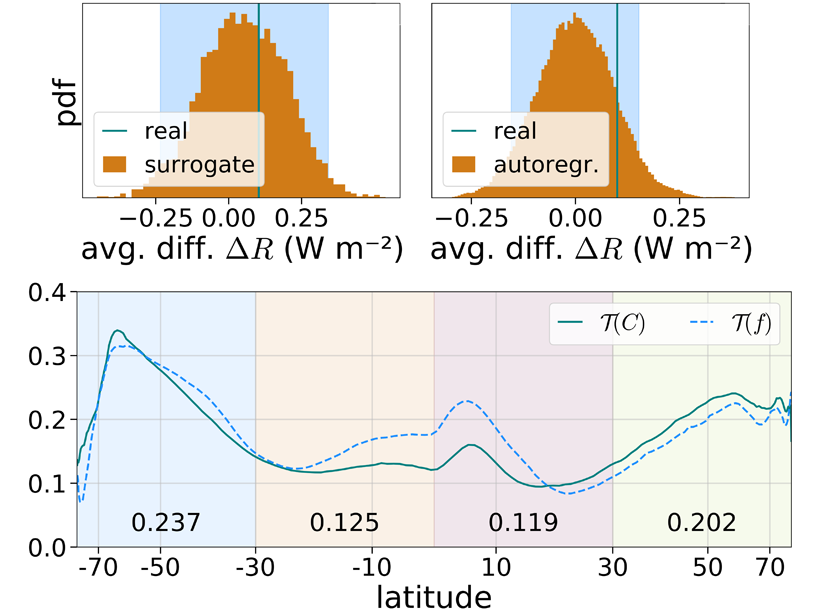Source: AGU Advances
The planetary albedo, the portion of insolation (sunlight) reflected by the planet back to space, is fundamentally important for setting how much the planet will warm or cool. Previous literature noted an intriguing feature that the albedo is essentially identical in the two hemispheres, on average, despite very different surface properties. Building upon earlier studies, Datseris & Stevens [2021] support the hemispheric albedo symmetry via advanced time-series analysis techniques using the latest release of CERES datasets. Because of land-sea fraction differences, the clear-sky albedo is greater in the northern than the southern hemisphere. However, this clear-sky albedo asymmetry is disrupted by the asymmetry in cloudiness, especially over the extratropical ocean. In search of a symmetry-establishing mechanism, the authors analyze the temporal variability and find substantial decadal trends in hemispheric albedo that is identical for both hemispheres. The results hint at a symmetry-enforcing mechanism that operates on large spatio-temporal scales.
Citation: Datseris, G. & Stevens, B. [2021]. Earth’s albedo and its symmetry. AGU Advances, 2, e2021AV000440. https://doi.org/10.1029/2021AV000440
—Sarah Kang, Editor, AGU Advances
Text © 2021. The authors. CC BY-NC-ND 3.0
Except where otherwise noted, images are subject to copyright. Any reuse without express permission from the copyright owner is prohibited.

